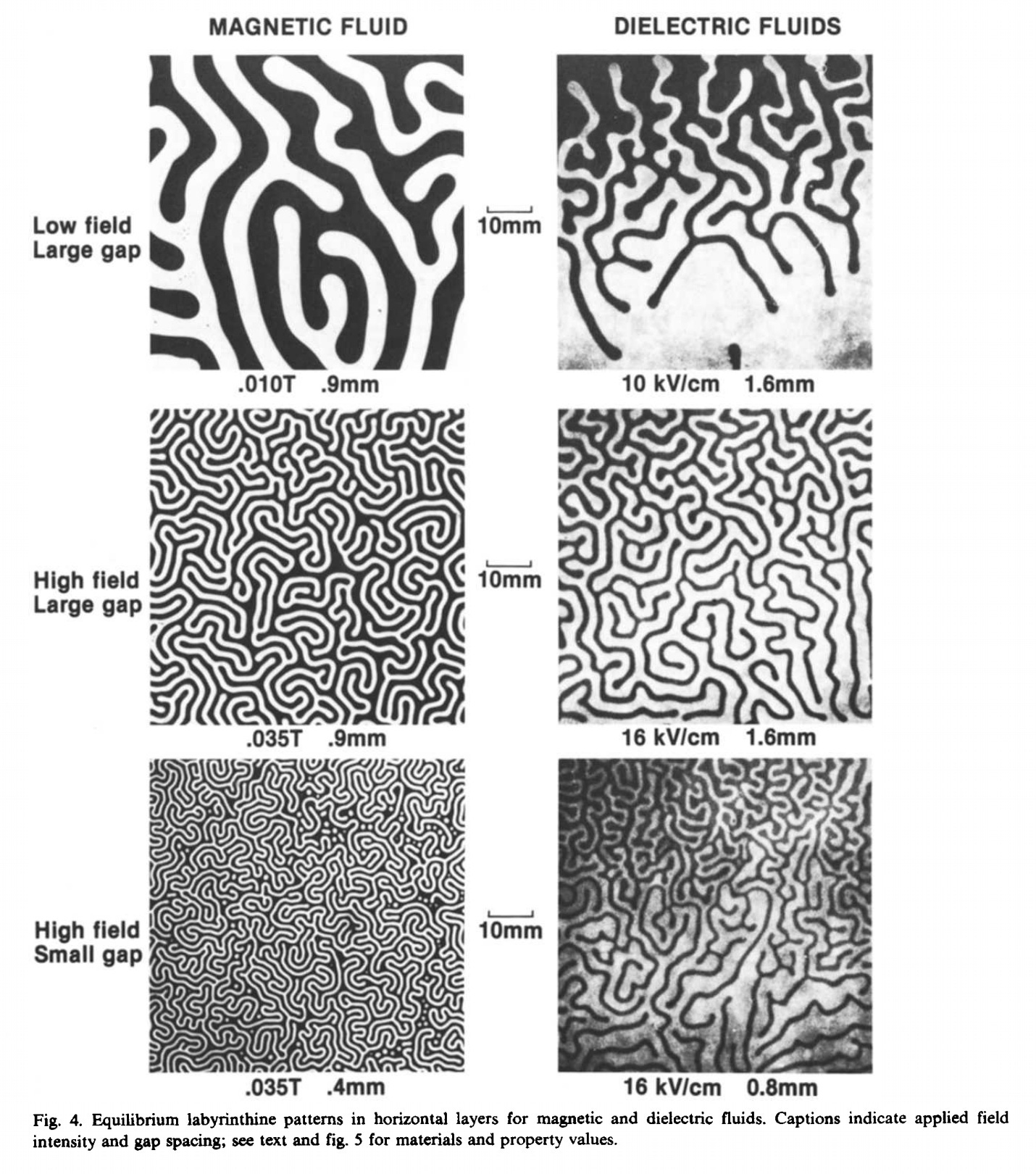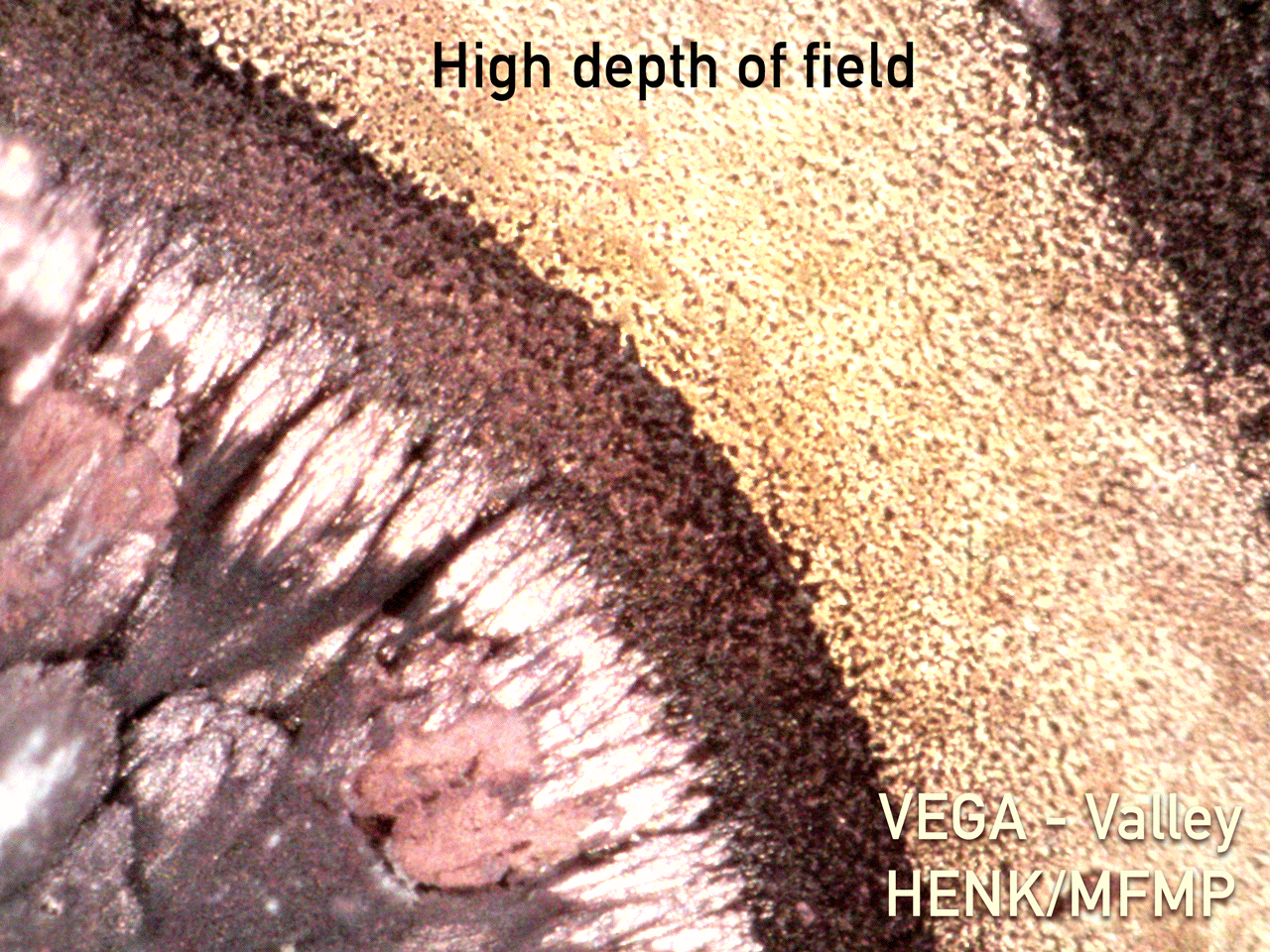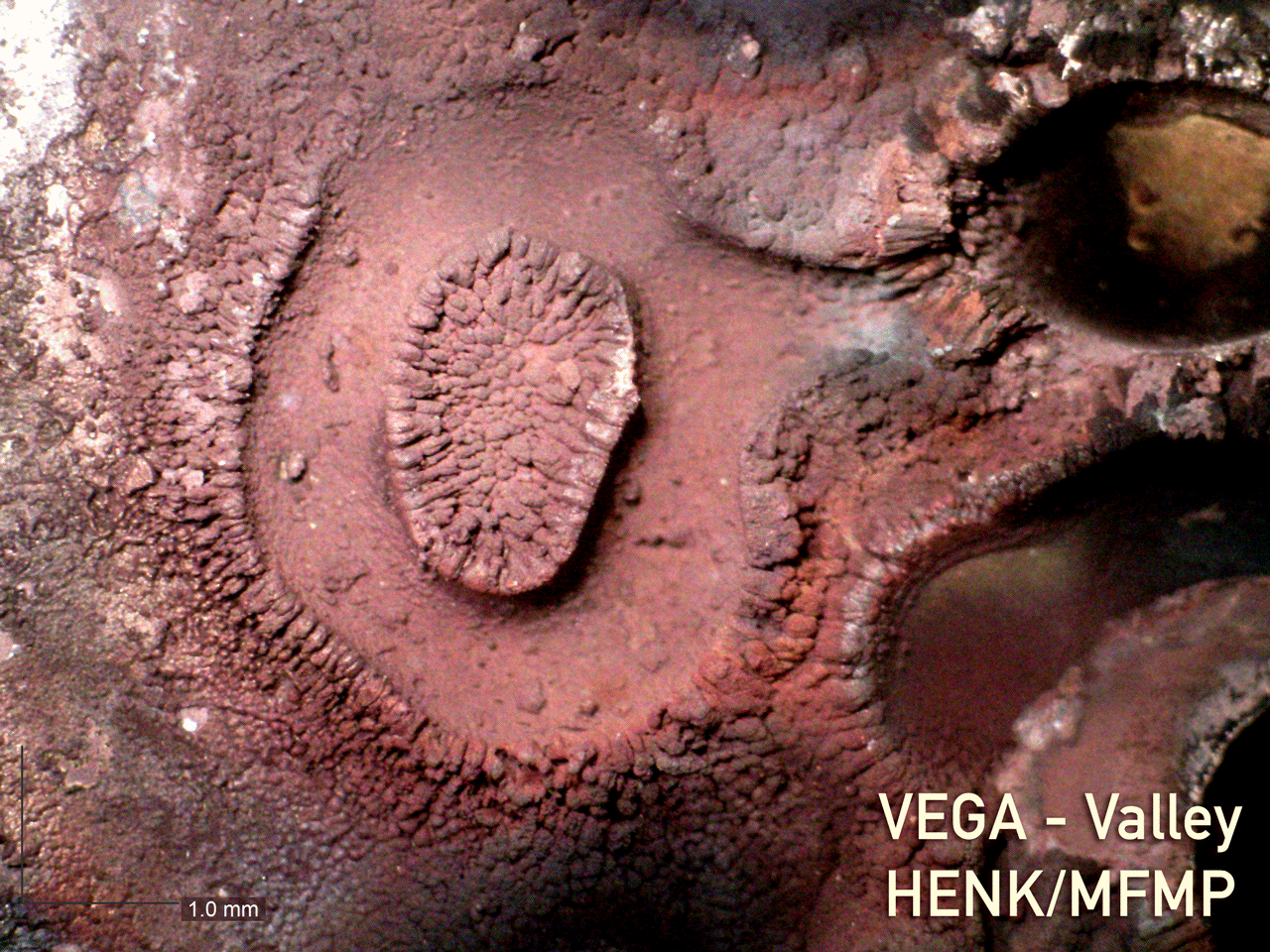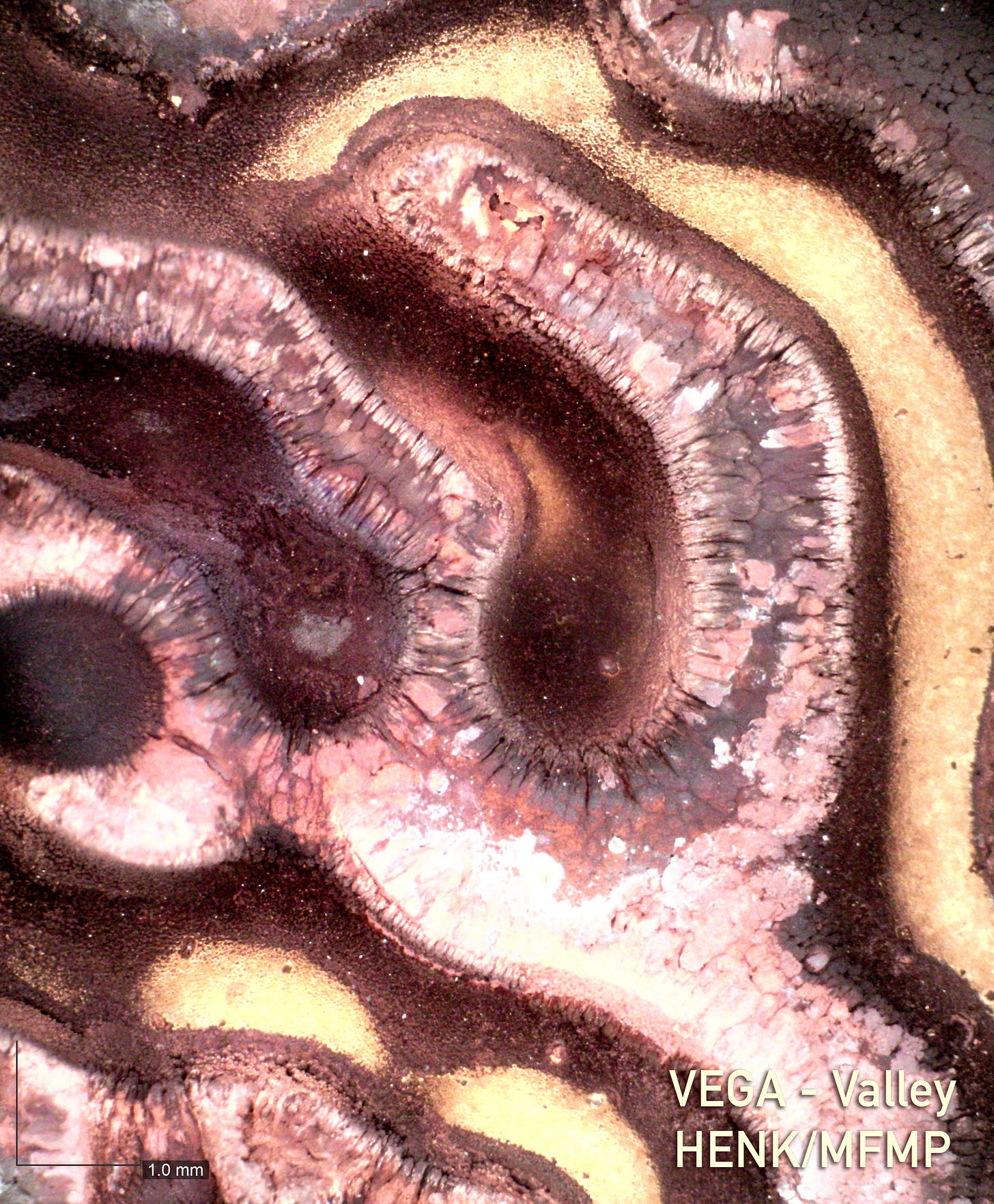VEGA - Live Microscope Session
Looking a very interesting cathode formation
This is the first attempt at a LIVE and interactive microscope session
Two tests were conducted in the run up to the attempted live session, conducted on the same brass cathode plate. Brass is normally a copper/zinc alloy sometimes with small amounts of tin and lead.
If you go to the MFMP/Parkhomov reaction tables designed by myself and programmed by Philip power and type the following query:
E1 in ('H', 'Cu', 'Zn', 'Sn', 'Pb') and E2 in ('H', 'Cu', 'Zn', 'Sn', 'Pb') order by MeV desc
With only 1 pass, you will get 6241 reactions leading to the production of 275 nuclides.
Magnetic fluid?
I speculate, based on “LABYRINTHINE INSTABILITY IN MAGNETIC AND DIELECTRIC FLUIDS” 1983 paper by Ronald E. ROSENSWEIG et. al., that the track could be formed by a ‘Magnetic Fluid’, or quite possibly coherent matter structures that self organise on a magnetic basis.

One wonders if it has any relationship to a structure found on an OHMA plate.
Images from first live session





Dear Bob,
Thanks for the recent Live Microscope Session. It's all just so fascinating. Really amazing.
I'm not terribly busy at the moment, I would sincerely love to volunteer. I type quite quickly, perhaps I could assist with transcription work? It might free you up to do other work that requires your lab and experience.
Please let me know if I can help.
Best,
Kyle Clasky
It's neat to look at, and your enthusiasm is contagious. It's interesting to note the difference from Lichtenberg patterns, this resembles cymatic much more. It would be interesting to see inside the reactor I would imagine the transmutation and elemental sorting would look more like this https://www.youtube.com/watch?v=FCM9ggxFDxk until settling and cooling.